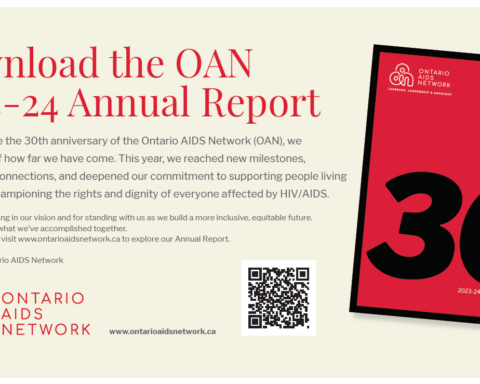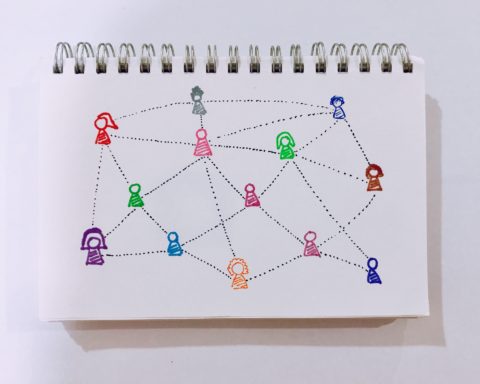📢 Please read and share the RFP with potential candidates! The OAN seeks proposals from insurance brokers, administrators, and consultants to develop a network-wide extended benefits and dental plan with comprehensive coverage, including HIV-related care, mental health services, gender-affirming care, and strong support for frontline workers in the HIV/AIDS sector. Deadline: March 25, 2025.
Read More →While community-based service providers delivering Canada’s HIV and AIDS response are pleased to learn of APRETUDE ‘s approval, we fear this, and other HIV prevention and treatment medications, will remain inaccessible to many African, Caribbean and Black (ACB) people who continue to experience significant barriers to accessing HIV prevention treatments like APRETUDE, compounded by systemic anti-Black racism within healthcare systems.
Read More →HIV organizations and other public health leaders expressed our grave concern regarding the government’s announcement to shut down and prohibit supervised consumption services (SCS) sites and restrict harm reduction equipment distribution programs in Ontario. While we acknowledge the complexities of addressing public safety concerns surrounding the toxic drug supply, the choice to dismantle these services will have devastating consequences: reduced safety, increased preventable deaths, increased transmission of bacterial and viral infections, and soaring healthcare costs. Ultimately, these policy changes will further entrench and deepen health disparities, and Ontario will fall behind other jurisdictions in health outcomes. Read the full letter.
Read More →The OAN Honour Roll has recognized over 120 outstanding individuals and organizations for their contributions to Ontario’s HIV response. It has become one of Ontario’s most esteemed awards within the HIV/AIDS movement. We are excited to host the awards again in early 2025. We are continuing to accept nominations. Nominate someone for one of the following awards:
Read More →We are pleased to share our annual report summarizing OAN, GMSH and WHAI activities, outputs, and financials for the 2023/24 fiscal year. In this report, you’ll find a report-back from the co-chairs of the OAN’s Board of Directors, and an update from our Advisory Committee. You will also get updates about our Skills Development, the Positive Leadership Development Institute and more. The full Annual Report is available on our website for you to explore. We encourage you to dive into the report, learn more about our journey over the past year, and discover how, together, we’re creating a positive impact
Read More →The Members of the OAN work together to establish a just and effective response to HIV and AIDS in Ontario. Northern Region Eastern Region Central Region – Toronto Central LHIN Western Region Priority Population Networks (PPN) Affiliates The OAN has a membership of 10 Affiliates Members, creating one of the strongest health movements in Ontario.
Read More →The OAN is pleased to welcome Vimbayi Pheobe Munonyara as our new Lead of Equity, Diversity and Inclusion. Vimbayi brings over 15 years of experience in the HIV/AIDS sector, spanning Africa, Australia, and Canada. She has led initiatives addressing social determinants of health and championed equity, diversity, inclusion, and accessibility for marginalized communities. Most recently, she contributed her expertise to the Regional HIV/AIDS Connection. Currently a board member of the Ontario HIV Treatment Network, she remains deeply committed to health equity and social justice through research and policy development. As the new Lead, Equity at the Ontario AIDS Network, Vimbayi
Read More →March 8 is International Women’s Day (IWD). It’s a global day to recognize and honour the strength, resilience, and power in every woman’s story. Each lived experience—whether of leadership, survival, advocacy, or care—shapes the collective fight for equity and justice. In the HIV movement, women have long been at the forefront, driving change, supporting their communities, and challenging the systems that hold them back. Yet, their stories are too often overlooked. Real progress requires us to listen, uplift, and act on these experiences—ensuring that every voice is heard, every barrier is broken, and every story is valued. Strength is found in
Read More →📢 Please read and share the RFP with potential candidates! The OAN seeks proposals from insurance brokers, administrators, and consultants to develop a network-wide extended benefits and dental plan with comprehensive coverage, including HIV-related care, mental health services, gender-affirming care, and strong support for frontline workers in the HIV/AIDS sector. Deadline: March 25, 2025.
Read More →










